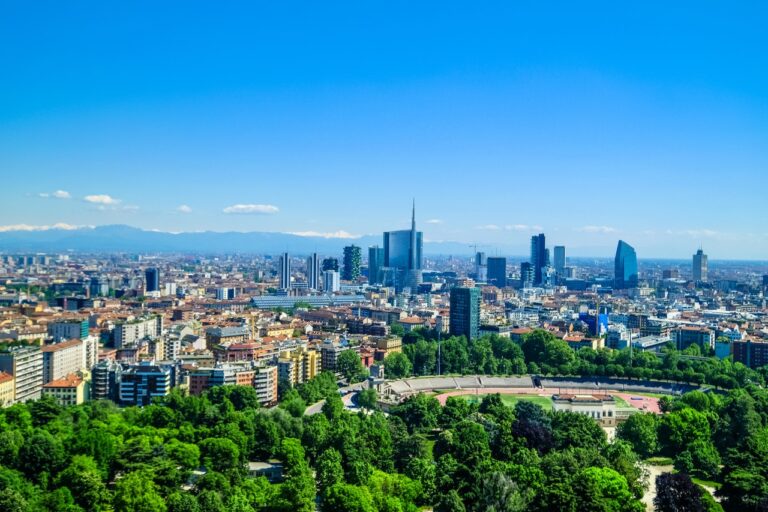7 Eco-Friendly Choices to Make for Your Home Renovation
 Planning your home renovation with sustainability in mind is a surefire way to minimize your household’s negative environmental impact. Your project is an opportunity to do your share in addressing the many problems plaguing the planet. Make these seven eco-friendly choices to be part of the solution.
Planning your home renovation with sustainability in mind is a surefire way to minimize your household’s negative environmental impact. Your project is an opportunity to do your share in addressing the many problems plaguing the planet. Make these seven eco-friendly choices to be part of the solution.
1. Climate-Resilient Design
Modernizing your property to make it more resistant to climate change’s adverse effects is a win for the environment. Being less susceptible to weather-related damage means fewer repairs and material consumption.
You can emphasize climate resilience in various ways. You can’t do them all, though, nor should you. Concentrate on improvements that can neutralize the most likely natural disasters threatening your home to economize.
If you live in a low-lying area near the ocean, you should be wary of hurricanes, storm surges and flash floods. Aside from bringing your home up to code, use landscaping to mitigate deluges by channeling stormwater to drains with swales, using porous surfaces and planting native trees.
2. Energy-Efficient Upgrades
Making your house more energy-efficient means you can have the same home lifestyle while consuming less fuel, such as electricity and natural gas. Energy efficiency is synonymous with thermal insulation. The more you prevent heat transfer, the less power you waste.
Building a complete thermal enclosure system is the best way to achieve energy efficiency. Its elements can neutralize the three types of heat transfer:
- Airtight construction, which prevents convection or heat transfer through liquids or gases, like warm air.
- Sufficient insulation, which minimizes conduction or heat transfer through solid objects, like wall studs.
- High-performance windows, which reduce radiation or heat transfer through electromagnetic waves, like sunlight.
Going heavy with operating windows, especially casements, can save you energy by naturally ventilating your living spaces. Opening them brings in fresh breezes that displace air contaminated with particulate matter, which can trigger allergies and clog your central heating, ventilation and air conditioning system’s filter.
Regarding appliances, almost all are energy-efficient. Pay attention to the yellow EnergyGuide label when comparing air conditioners, furnaces, boilers, refrigerators, clothes washers and some other home appliances. Use it to learn about their estimated energy cost based on the national average price for energy and typical use.
3. Electric Appliances
Running your home purely on electricity is doing your share to help the world wean off fossil fuels and stop climate change. Although not every appliance has an electric version, many do — so electrify where you can.
Retiring gas-, oil- and propane-fired home appliances in favor of electrified models may involve some remodeling, though. These items increase the amount of electricity flowing through circuits and can be bulky. They may require a more powerful electrical system if your breaker box has hit full capacity and you need more space.
However, ditching your fossil-powered appliances doesn’t necessarily mean your home will have less carbon footprint. Electricity is ungreen when derived from a dirty energy source like coal. Invest in an array of solar photovoltaic panels to power your house more cleanly.
4. Circular Materials
Buying building products made from materials already in circulation helps minimize landfill waste, keep carbon sequestered and conserve virgin resources.
High-density fiberboard (HDF) is an excellent case in point. This eco-friendly timber alternative contains recycled wood fibers. It’s suitable for furniture, door and wall paneling construction with its standard thickness of 3-8 millimeters and lends longevity to woodwork because it resists moisture, is immune to cracking and doesn’t warp.
Renewable building materials are also circular. For example, incorporating as much bamboo into your renovation project as possible is sustainable because it’s the fastest-growing plant on the planet and can stand the test of time.
Think about deconstruction as much as construction. Genuinely circular building components are painless to disassemble, making them easy to recycle down the road.
5. Green Products
Using paints and stains with natural pigments, zero heavy metals, no volatile organic compounds (VOCs), low concentrations of biocides, and minimal fungicides benefits the environment and your family’s health.
Nongreen paint and stain ingredients can be toxic. Plus, some VOCs are greenhouse gases — they absorb sunlight the planet radiates, help intensify global warming and worsen climate change.
6. Water-Saving Fixtures
Upgrading your plumbing system to use less water than needed is sustainable because H2O is becoming scarcer than ever. By 2050, less than 500 cubic meters — or under 500,000 liters — will be available per person annually in 45 countries.
Installing WasteSense water-efficient products helps prevent flushing hundreds of gallons yearly down the drain. Updating your plumbing system also helps discover and eliminate leaks.
7. Certified Construction Professionals
Hiring green home renovation professionals is vital in achieving sustainability every step of the way. Having partners who use eco-friendly product suppliers and are adept at environmentally conscious construction is a must.
However, many pros engage in greenwashing — overselling their credentials to get the business of green-minded homeowners. Protect yourself from dishonest characters by relying on third-party oversight organizations’ databases.
For instance, the U.S. Green Building Council has certified thousands of construction professionals in the U.S. who have demonstrated core competency or expertise in green building principles. It has publicized its list for everyone’s consumption.
Every Eco-Friendly Choice Counts
It takes a series of individual eco-friendly decisions to move the needle on sustainability. Use your home renovation as a chance to make your residence greener than ever and living proof of environmental consciousness.


